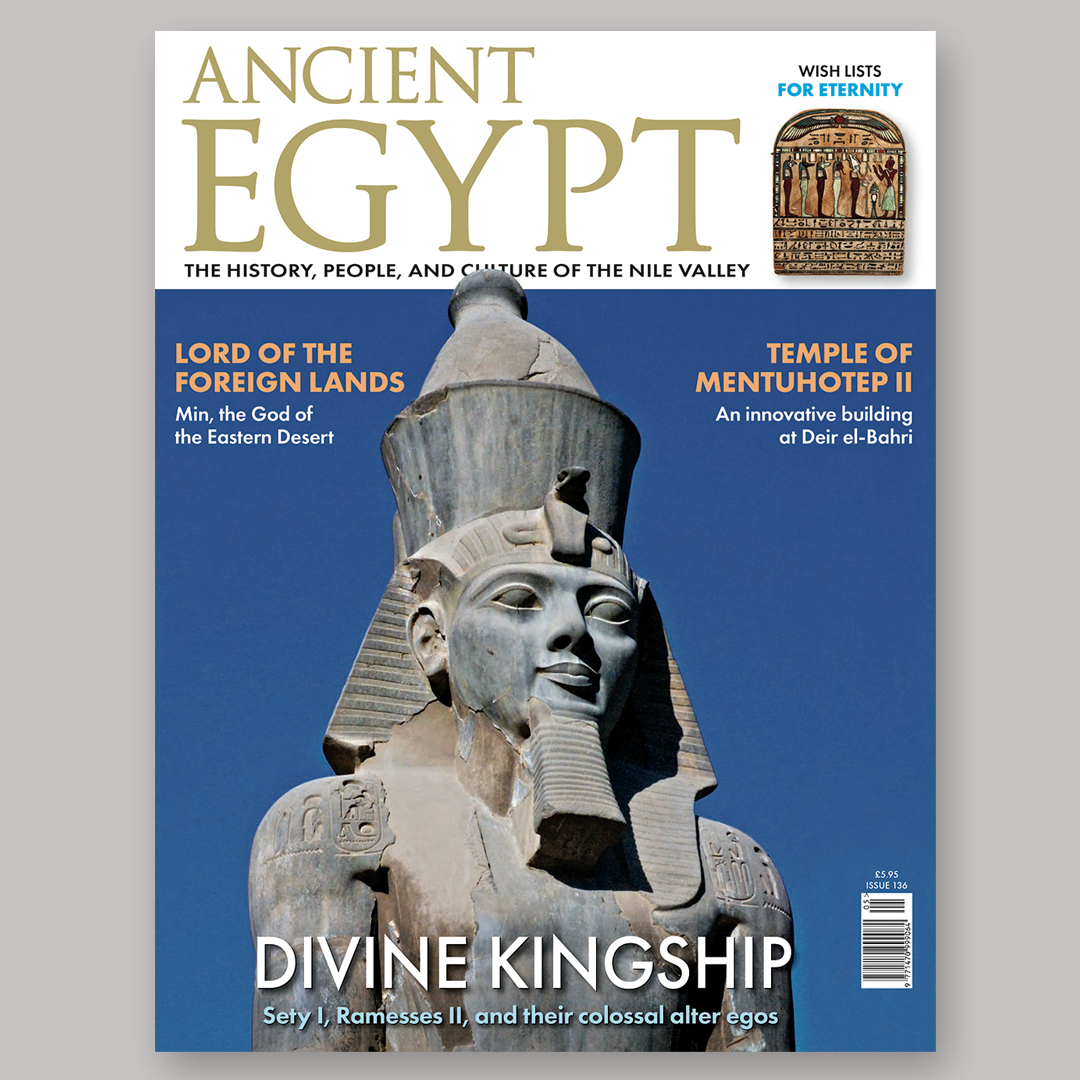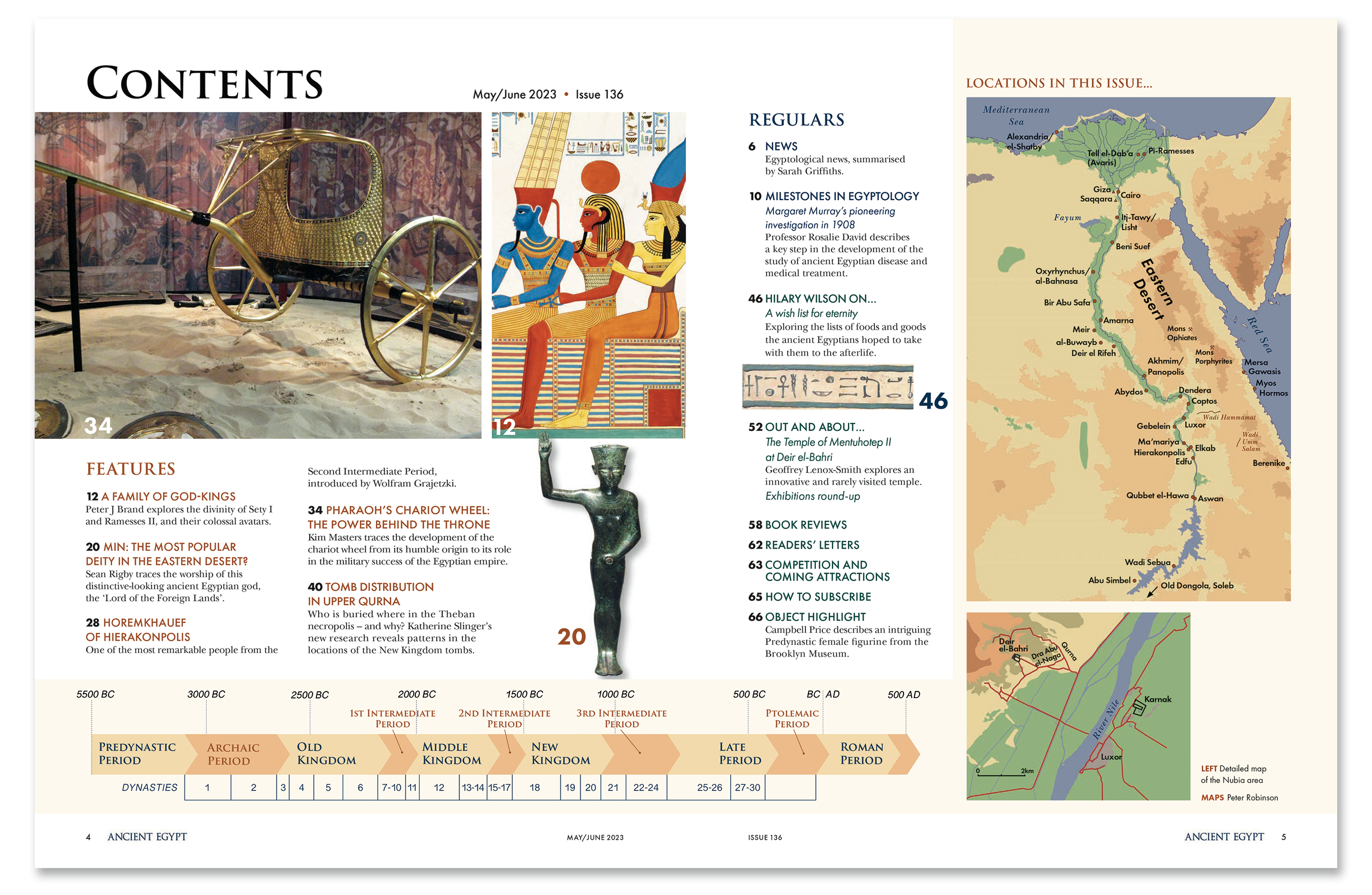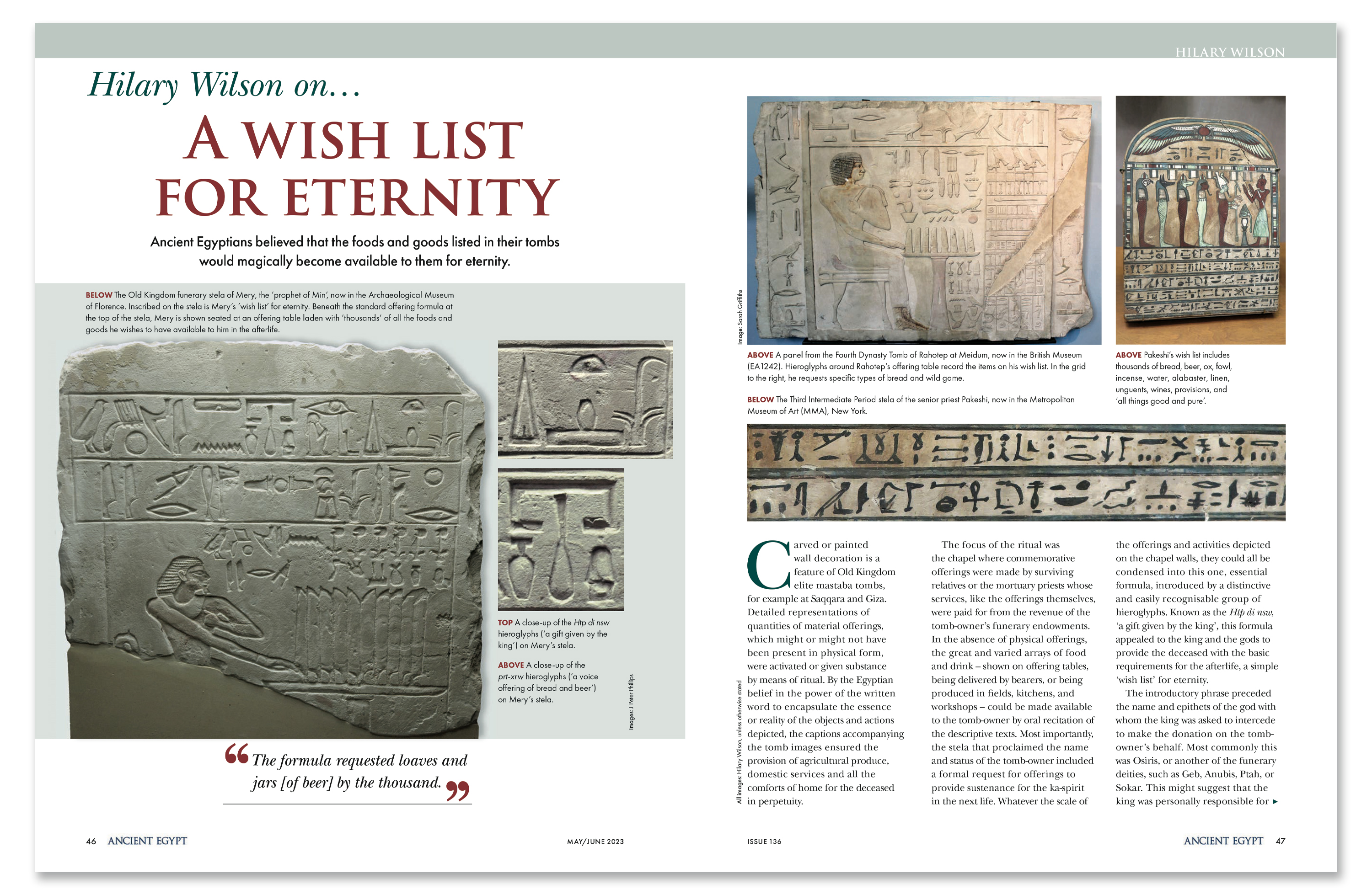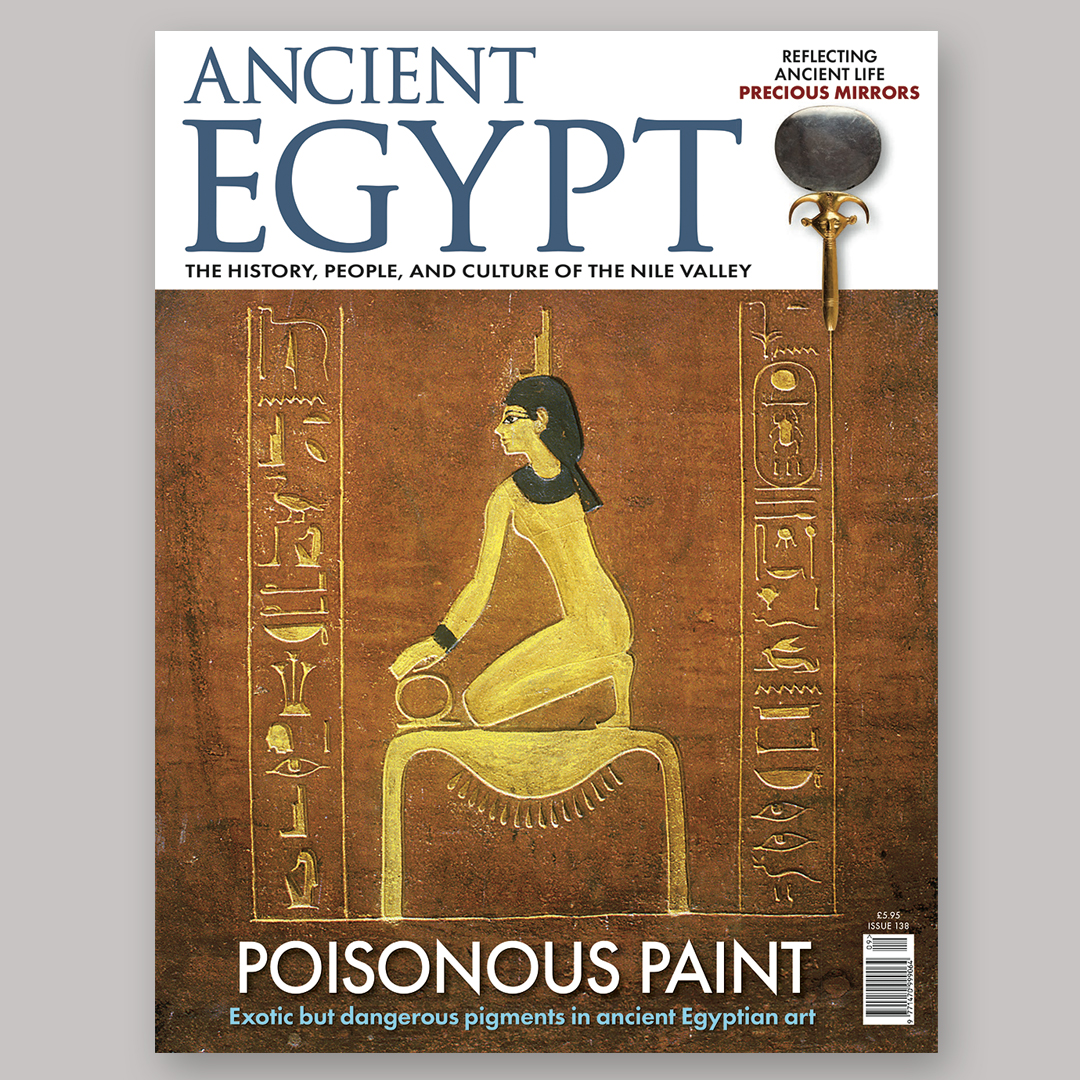AE 136 - May / Jun 2023

As Hilary Wilson explains in her article ‘A Wish List for Eternity’ in this issue, the ancient Egyptians had an extraordinary respect for the hieroglyphic inscriptions on the walls of their tombs, believing that speaking the names of the foods listed would magically cause them to be made available to the tomb-owner in the afterlife. Similarly, they believed that speaking the name of the deceased would ensure that he or she would have life after death.

Because of this, pharaohs inscribed their names at every opportunity on their monuments and statues, often on those made by their predecessors. Ramesses II, whose statue in Luxor Temple is pictured on the cover of this issue, enjoyed a very long reign, but as is explained in the article by Peter J Brand on divine kingship in the early Nineteenth Dynasty, he may well have felt it necessary to legitimise his right to the position, as he was descended from an army general, rather than being of royal blood. He took every opportunity to make his mark, by building everywhere from Abu Simbel in the south to his new capital Pi-Ramesses in the Delta, and his deeply incised cartouche is one of the most commonly read by modern tourists. Like so many of the 19th-century explorers, who felt it perfectly acceptable to record their visits for posterity by writing their names on the monuments they visited, Ramesses II’s workmen carved the king’s name all over the place. It can even be seen on one of the columns of the temple erected 700 years earlier by Mentuhotep II at Deir el-Bahri, described by Geoffrey Lenox-Smith in this issue’s ‘Out and About’ feature. Ramesses is no doubt enjoying a happy sojourn in the ‘Field of Reeds’ thanks to the readers of this magazine!

In this issue:
A FAMILY OF GOD KINGS
Peter J Brand explores the divinity of Sety I and Ramesses II, and their colossal avatars.

MIN: THE MOST POPULAR DEITY IN THE EASTERN DESERT?
Sean Rigby traces the worship of this distinctive-looking ancient Egyptian god, the ‘Lord of the Foreign Lands’.
HOREMKHAUEF OF HIERAKONPOLIS
One of the most remarkable people from the Second Intermediate Period, introduced by Wolfram Grajetzki.
PHARAOH’S CHARIOT WHEEL: THE POWER BEHIND THE THRONE
Kim Masters traces the development of the chariot wheel from its humble origin to its role in the military success of the Egyptian empire.
TOMB DISTRIBUTION IN UPPER QURNA
Who is buried where in the Theban necropolis – and why? Katherine Slinger’s new research reveals patterns in the locations of the New Kingdom tombs.

Hilary Wilson Explore the lists of foods and goods the ancient Egyptians hoped to take with them to the afterlife.
OUT AND ABOUT…
The Temple of Mentuhotep II at Deir el-Bahri Geoffrey Lenox-Smith explores an innovative and rarely visited temple. Exhibitions round-up



